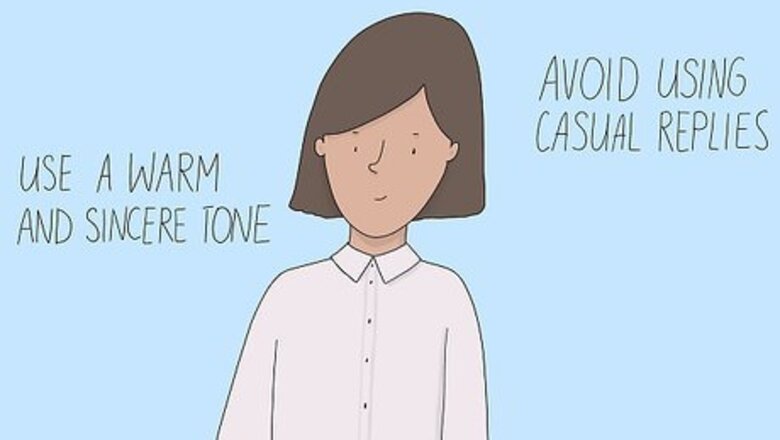
views
At Work
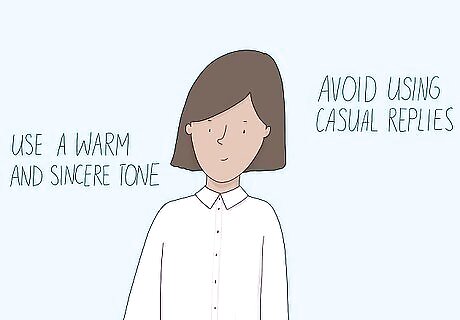
Offer sincere replies in a business setting. In business meetings and relationships, you should avoid casual replies and show your sincerity when responding to “thank you.” Avoid using casual replies in a business setting. For instance, you should avoid phrases like “no problem,” “anytime,” and “it's alright” when replying to a client or customer. Use a warm and sincere tone when replying to “thank you.” After the meeting, you can send an email or note that expresses appreciation for your business relationship. This will make the other person remember how helpful you were!
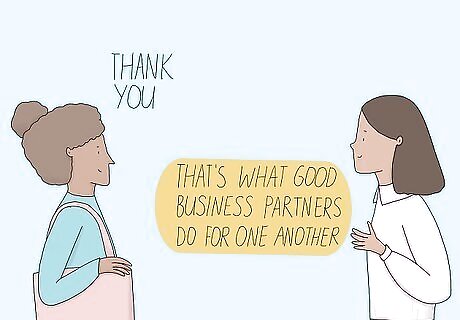
Make people feel special. When replying to “thank you,” it is best to offer a response that makes them feel that your relationship with them is special and unique. For instance, you might say, “That's part of the complete commitment to service that you can expect when you do business with me.” Try saying, “That's what good business partners do for one another. Thanks for doing business with us.” If you know anything about the client, you can personalize the message. For example, you can say, "It is always a pleasure working with you. I hope your big presentation goes well next week."
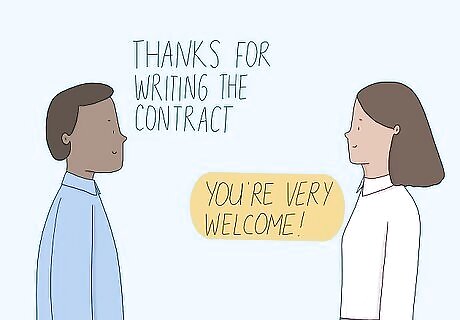
Say “You're very welcome.” This is a classic response and keeps things simple. For instance, when a partner says “Thanks for writing the contract,” you can simply say, “you are very welcome.”

Offer a warm reply to a customer or client. When dealing with a customer or client, you want to convey your appreciation for their business. Tell your customer or client, “We appreciate your business.” Use a sincere and warm tone. This tells the customer that you are grateful for their business. Reply, “I'm happy to help.” This tells the customer that you enjoy your job and are keen to help them. If you are serving a customer in a retail store and they “thank you” for showing them the options for a particular product, you could say, “I'm happy to help.”
In Email or Text
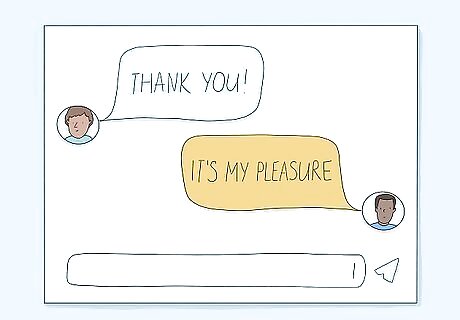
Reply to thank you emails in a way that fits your personality and audience. There is no standard for replying to “thank you” in an email. Your response should fit the expectations of your audience and your personality. Use email in a way that fits your personality. If you are a chatty or outgoing person, go ahead and say “you're welcome” or “it's my pleasure” in response to a “thank you” email or text message. Consider your audience when replying via email or text. Younger audiences might not expect a reply to an email or text saying “thank you.” Older people often have different expectations for etiquette, and may very well appreciate a reply such as “you're welcome.” You may want to avoid emojis, smileys, and other images when responding to someone in email. These may be too informal for the situation.
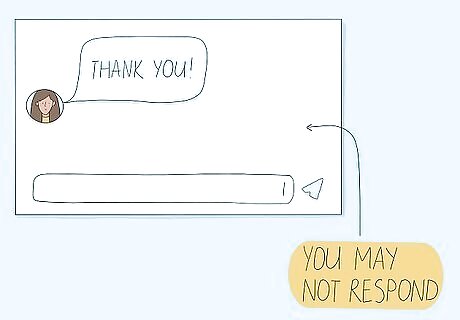
Responding to a “thank you” email is considered discretionary. Consider your personality and your audience. If you are a chatty person in face to face conversations, it may be best to respond to a “thank you” email. However, if you are not very outgoing, you can probably get away without a response.
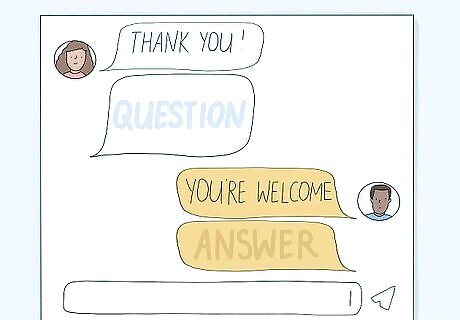
Respond to “thank you” emails when you want to continue the conversation. You can write, “you're welcome” and then move on to the next conversation topic. You may want to respond to the “thank you” email if there is also a question requiring a response in the email. In this case, you can say “you're welcome” and then answer their question. You may want to respond to the “thank you” email if there was a specific comment in it that you wanted to address. In this case, you could say “you're welcome” and then address the comment that you wanted to talk about to continue the conversation.
In Informal Situations
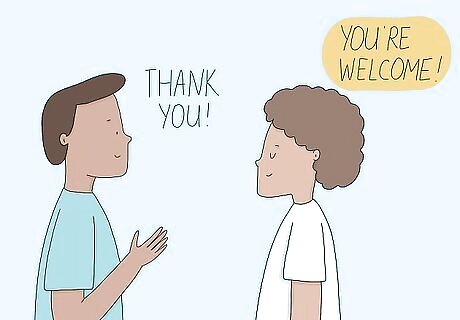
Respond with “you're welcome.” This is one of the most obvious and widely used responses to “thank you.” It conveys that you accept their gratitude. Avoid saying “you're welcome” in a sarcastic tone. Unless you want to convey that you didn't really appreciate doing the job for someone or don't appreciate them in general, it is best to avoid a sarcastic tone.
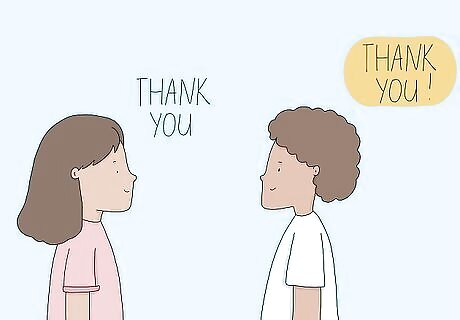
Say “thank you!” This conveys that you are also grateful for their contributions. Responding with a “thank you” conveys a reciprocal sense of gratitude. However, avoid repeating it multiple times in the same conversation. One thank you for each person in the conversation will do just fine.
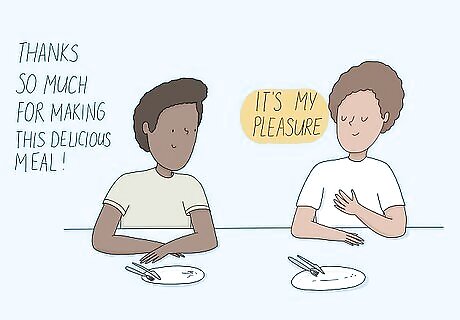
Say “It's my pleasure.” This conveys a sense of enjoyment in the act of doing something for others. It can be heard at five star hotels but could be used more widely. For instance, if a friend says, “Thanks so much for making this delicious meal!” You might respond by saying, “It's my pleasure.” This conveys your enjoyment of cooking for others.
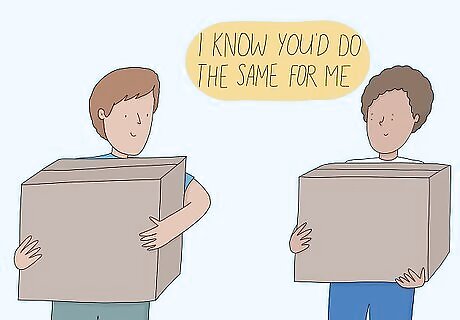
Tell them, “I know you'd do the same for me.” This conveys that you have a reciprocal relationship where you do each other favors out of good will. It also communicates confidence in your ability to help and activates the reciprocity of the partner. For instance, if your friend says, “Thanks for helping me move into my new apartment this weekend. I don't know what I would have done without you!” You might reply, “I know you'd do the same for me.” This conveys an understanding that you have a great friendship built on reciprocity.
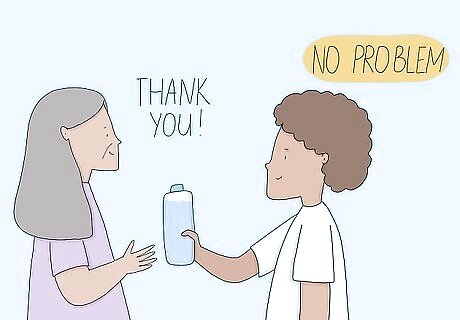
Say "no problem." This is a common response but should be used sparingly, especially in a business setting. It conveys that what you did was no big deal. This can be fine in certain situations but can also diminish the relationship building opportunity of the interaction. Say "no problem" only if it is true. If something took effort or time, don't be afraid to accept the other person's gratitude. For instance, if your friend says “thank you” for a small act like grabbing something out of the trunk of the car, you might say “no problem.” Avoid saying “no problem” in a dismissive tone. This conveys that you didn't really put any work into whatever it is that you are being thanked for. Your friend or business partner will feel like your relationship is not important.
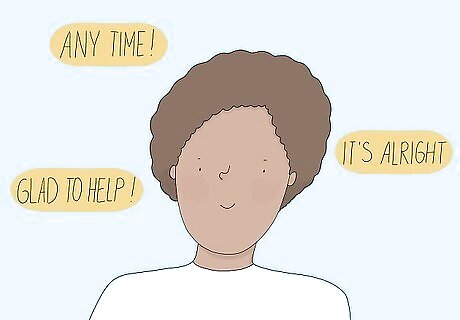
Choose a casual response. If you are replying to gratitude in casual settings or relationships, there are a variety of phrases to choose from. If you are responding to expressions of gratitude for very small things and a you need a quick response, these phrases may be appropriate. Say "it's alright". This phrase is best used in moderation. It can be used in situations where "thank you" is being offered for very small or petty things. Like “no problem,” it should not be said in a sarcastic or dismissive tone. Say "anytime!" This is another one which can be used to assure the person that in such situations help can always be given. It conveys that you are willing to do the favor or task anytime. Say “glad to help.” This conveys that you are happy to help your friend or acquaintance with the job or task. For instance, if your friend says “thanks for helping me install my new bookshelf.” You could say, “glad to help!”
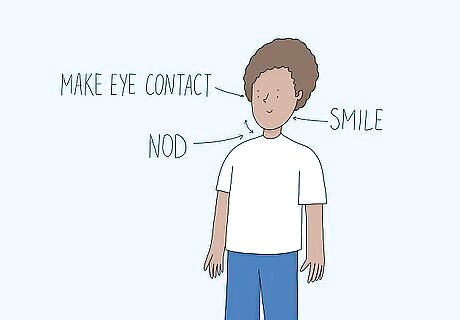
Watch your body language. Your expression and body language can help make you seem sincere, personable, and helpful. When accepting thanks, remember to smile. Make eye contact with the other person as you speak, and nod along to what they say. Avoid crossing your arms or looking away.




















Comments
0 comment